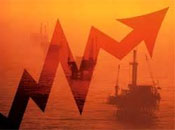Even if I'm wrong, you will want to explore my logic. Because even if I'm too bullish by $25 per barrel, there will still be lots of money made by smart traders exploiting the swings of the global energy megatrend in the 21st century.
My petroleum bullishness is based on three driving forces affecting global energy supply and demand. And my focus on these secular trends helps me see big swing trading opportunities in energy sector ETFs. Let's first talk about the mega forces of the "trade of the decade," and then I'll tell you how to join me trading them.
Mega Force #1: Emerging Markets
Between the BRIC countries (Brazil, Russia, India and China) and dozens of other developing economies in Africa, Asia, South America and the Middle East, one could estimate that there are at least two billion people who aspire to the lifestyles of the West. These emerging middle class populations want the same jobs, housing, food, clothes and transportation we have.
As their governments and entrepreneurs oblige, this rapid development means lots of new urban infrastructure, including the roads, bridges, schools, hospitals and energy grids of any modern city. All of this means an incredible growth rate for energy demand. Plus, nearly every new automobile purchase in an emerging economy adds incrementally to oil consumption.
But don't take my amateur economist view on emerging economic development and the energy demands that go along. Here are some forecasts from the International Energy Agency (IEA) in its November 2011 "World Energy Outlook" report:
- World primary demand for energy increases by one-third between 2010 and 2035.
- In 2035, China consumes nearly 70% more energy than the United States, the second-largest consumer, even though, by then, per-capita energy consumption in China is still less than half the level in the United States.
- The rates of growth in energy consumption in India, Indonesia, Brazil and the Middle East are even faster than in China.
- The share of fossil fuels in global primary energy consumption falls slightly from 81% in 2010 to 75% in 2035. Natural gas is the only fossil fuel to increase its share in the global mix over the period to 2035.
The last point is especially worth noting if you are an investor in "alternative" energy like solar and wind power. While global energy demand rises by over 30% in the next few decades, fossil fuels only drop off 6% in the total consumption pie.
Mega Force #2: Peak Oil
You have no doubt heard of the theory of "peak oil." In case you've forgotten its premise, this is the idea that we have reached, or are soon about to cross, the threshold where the majority of known global oil reserves in the ground are at their maximum and will only decline going forward.
There is a heated debate going on right now as we speak between the "peak oilers" and those who say this is mere big oil — and small oil for that matter — commercial and political propaganda. It's clear how lots of petroleum companies would benefit from the idea that there will be less supply going forward.
The price of oil and the awareness of a peak in natural supplies have driven the recent explosion in shale exploration and production in the US. Natural gas E&P companies are using "fracking" technology to unlock large reserves of oil and gas from their vast fields in the Eagle Ford shale in Texas and the Bakken shale in North Dakota.
The production from these domestic fields hit record levels this year and helped drive crude prices down from $110 to $80. But, the long-term environmental concerns over shale fracking only reinforce the idea that we are much closer to "peak" petroleum than to finding our own Saudi Arabia in the US.
Mega Force #3: Geopolitical Eruptions
We all know that the problems in the Middle East are not going away any time soon. No matter how many peace negotiations, wars or regime changes, the ages-old conflict between religions and cultures will persist for decades more.
The bid keeping crude oil near $100, even with so much economic uncertainty over Europe and China, is likely due to tensions out of Iran. Why is Iran so important? Because it forms the east coast of the Strait of Hormuz, the world's most important oil "chokepoint" due to its daily flow of over 15 million barrels per day.
Nearly 20% of global consumption must pass from the Persian Gulf through the Strait of Hormuz to the Gulf of Oman and on to the Arabian Sea. A war involving Iran and disrupting that seaborne cargo could spike crude to over $125 very quickly.
I make no political or value judgments about the problems or solutions in these parts of the world. I am not smart enough to do so because these difficulties are as giant and complex as they are ancient.
But I am a good enough student of the markets to accept what I cannot control and then invest accordingly when faced with 3 unstoppable megatrends that will continue to interact and make energy "the trade of the decade."
How to Play Energy Swings
This sector is so volatile that you can make a lot of money timing its upward and downward swings, even if you don't catch them perfectly. Want to know how . . . and exactly when? That is why I am directing a brand-new initiative, the Zacks Market Timer. It is a unique approach to predicting quick, explosive moves in industries, sectors and the market as a whole.
Of course, we won't call them all correctly, but our strategy is to cut short losses and maximize gains by 2X with a simple Zacks metric and then by 3X again with a twist on a common investment move. We must restrict the number of investors who take part in these trades, so the service will close to new members by this weekend. If you are interested in exploiting energy and other trends, I strongly encourage you to check it out right now.
Good Investing,
Kevin Cook
Zacks























































